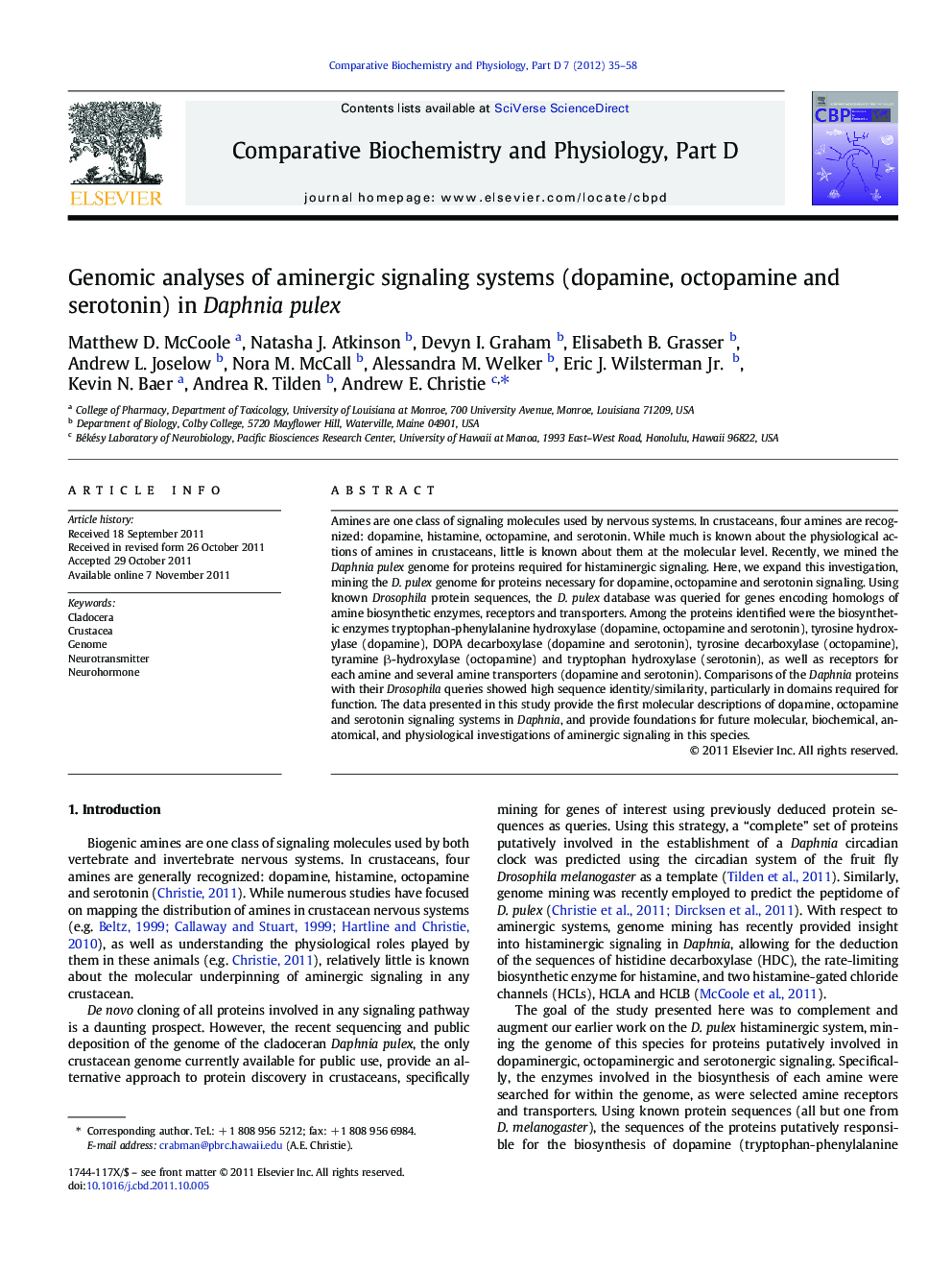| Article ID | Journal | Published Year | Pages | File Type |
|---|---|---|---|---|
| 1978769 | Comparative Biochemistry and Physiology Part D: Genomics and Proteomics | 2012 | 24 Pages |
Abstract
Amines are one class of signaling molecules used by nervous systems. In crustaceans, four amines are recognized: dopamine, histamine, octopamine, and serotonin. While much is known about the physiological actions of amines in crustaceans, little is known about them at the molecular level. Recently, we mined the Daphnia pulex genome for proteins required for histaminergic signaling. Here, we expand this investigation, mining the D. pulex genome for proteins necessary for dopamine, octopamine and serotonin signaling. Using known Drosophila protein sequences, the D. pulex database was queried for genes encoding homologs of amine biosynthetic enzymes, receptors and transporters. Among the proteins identified were the biosynthetic enzymes tryptophan-phenylalanine hydroxylase (dopamine, octopamine and serotonin), tyrosine hydroxylase (dopamine), DOPA decarboxylase (dopamine and serotonin), tyrosine decarboxylase (octopamine), tyramine β-hydroxylase (octopamine) and tryptophan hydroxylase (serotonin), as well as receptors for each amine and several amine transporters (dopamine and serotonin). Comparisons of the Daphnia proteins with their Drosophila queries showed high sequence identity/similarity, particularly in domains required for function. The data presented in this study provide the first molecular descriptions of dopamine, octopamine and serotonin signaling systems in Daphnia, and provide foundations for future molecular, biochemical, anatomical, and physiological investigations of aminergic signaling in this species.
Related Topics
Life Sciences
Biochemistry, Genetics and Molecular Biology
Biochemistry
Authors
Matthew D. McCoole, Natasha J. Atkinson, Devyn I. Graham, Elisabeth B. Grasser, Andrew L. Joselow, Nora M. McCall, Alessandra M. Welker, Eric J. Jr., Kevin N. Baer, Andrea R. Tilden, Andrew E. Christie,
